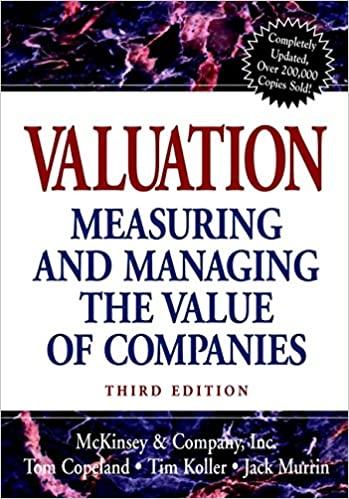

Use the following information to answer questions 1 through 10 You are trying to form portfolios based on the following information about Stocks A,B,C and D Expected Return of Stock A = 5%; Stock B = 8%; Stock C = 15%; Stock D= 21% 18%; Stock C 32%; Stock D 40% The Standard Deviation of Stock A 12 %; Stock B The Correlation between A,B = - 0.05; A,C 0.10, A,D 0.07; B,C 0.20; B,D 0.50; C,D 0.35 The Risk Free Rate is 4.0% Using Excel, do/answer the following: Question 1: Construct a correlation matrix of the four stocks Question 2: Construct a Covariance matrix of the four stocks. Question 3, 4 and 5: Assume that you use a nave diversification approach and put 25% of your money equally into each stock. Compute the Expected Return, Standard Deviation and Sharpe Ratio of such a portfolio. Question 6,7,8, and 9: Compute the Weights, Expected Return, Standard Deviation and Sharpe Ratio of the Market (Optimal) portfolio using the Excel solver function. Question 10: Assume an investor has a risk aversion factor of 3. If they had $100,000, how much should they put in the risky portfolio calculated above? Use the following information to answer questions 1 through 10 You are trying to form portfolios based on the following information about Stocks A,B,C and D Expected Return of Stock A = 5%; Stock B = 8%; Stock C = 15%; Stock D= 21% 18%; Stock C 32%; Stock D 40% The Standard Deviation of Stock A 12 %; Stock B The Correlation between A,B = - 0.05; A,C 0.10, A,D 0.07; B,C 0.20; B,D 0.50; C,D 0.35 The Risk Free Rate is 4.0% Using Excel, do/answer the following: Question 1: Construct a correlation matrix of the four stocks Question 2: Construct a Covariance matrix of the four stocks. Question 3, 4 and 5: Assume that you use a nave diversification approach and put 25% of your money equally into each stock. Compute the Expected Return, Standard Deviation and Sharpe Ratio of such a portfolio. Question 6,7,8, and 9: Compute the Weights, Expected Return, Standard Deviation and Sharpe Ratio of the Market (Optimal) portfolio using the Excel solver function. Question 10: Assume an investor has a risk aversion factor of 3. If they had $100,000, how much should they put in the risky portfolio calculated above








